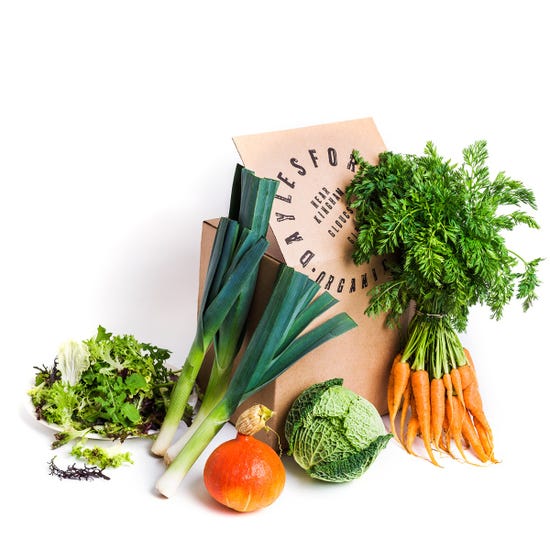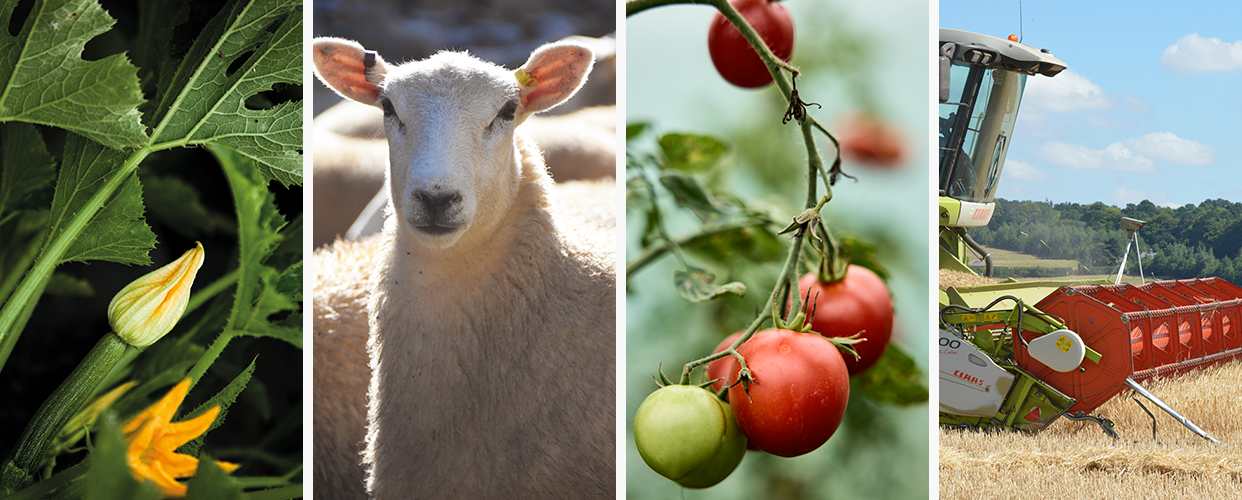
Notes from the Farm - August 2023
FROM RICHARD SMITH
Farm Managing Director
GATHERING GRAIN
Harvesting is best done in dry weather conditions, so with all the rain in August we had to wait before we could harvest our einkorn wheat, emmer wheat and spelt wheat – watch a video of the harvester in action below. We drilled the seed of these ancient grains last October and once the crop is harvested, we will test it for making flour so the team in our Bakery can get creative with new recipes for home-grown loaves.
MARVELLOUS MERINO
We shear our herd of merino sheep in late August. We farm Saxon merino, a breed that dates back hundreds of years in northern Europe and England. These strong, hardy animals have superfine wool, prized for its softness and quality. Last year, our home-grown merino wool was used to make a one-of-a-kind knitwear range for Bamford, which was awarded the Positive Luxury Product Innovation of the Year award. The whole collection was completely traceable as it was grown, sheared, spun and knitted on British soil. We look forward to seeing how this special, luxurious fibre will be transformed this year.
CREAM OF THE CROP
Towards the middle of August we begin calving our organic dairy herd, which will continue until February. Steady calving ensures we have a constant, regular supply of milk so our organic Creamery on the farm can make award-winning cheese throughout the year. Every few weeks we scan our dairy cows to see if they are pregnant and give them a full veterinary check. Our Farms Director is proud to say that in the 20 years since he has been farming at Daylesford, we have never reared an unhealthy calf and they have all thrived on our organic farm, thanks to our high standards of animal welfare.
DEEP STRAW BEDS
Our cattle and other animals live indoors from October until April, so we haul straw for their winter bedding in the summer and will make sure we have enough by topping up with straw bought in from other farms.
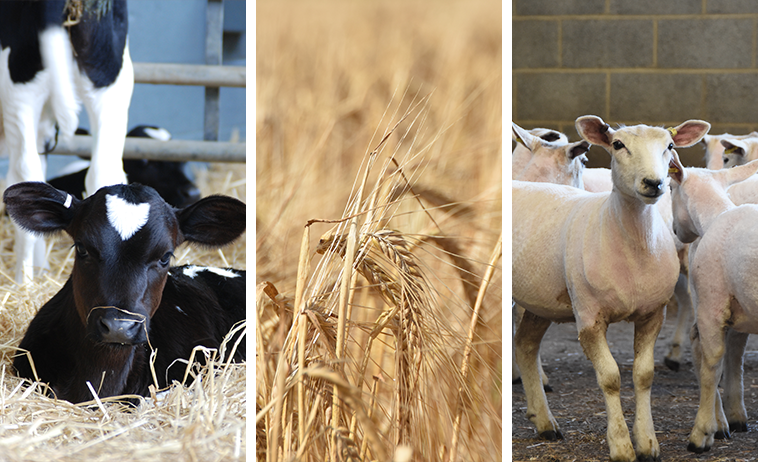

FROM JEZ TAYLOR
Head of Market Garden
LIFTING AND DRILLING
The major field planting is all finished by the end of July, so come August it is time to do some drilling of turnips, winter radish and coriander. Before we can begin, we need to clear the ground, which means a lot of watching the weather and finding dry moments to lift maincrops like onions and potatoes.
GREEN MANURE
We also sow a fertility-building mix of seeds known as green manure – ours has nine or so different varieties including clover, phacelia, buckwheat and rye. These plants help provide the soil with essential organic matter and vital nitrogen, phosphorous and potassium. Our Market Garden uses the same fields every year and we do not have the opportunity to move fields so whenever we can, we like to mitigate the damage done by cultivation by filling the soil with busy, searching, hungry roots that support micro life, such as worms and bacteria.
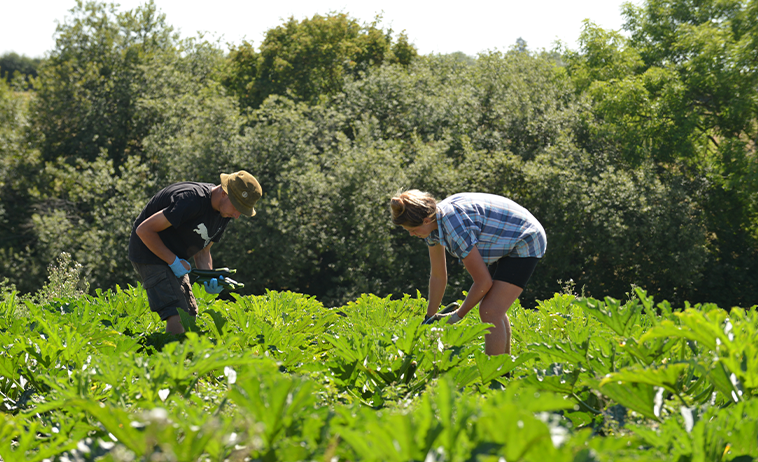

WET, WET, WET
The heavy rain we had in August caused a bit of blight in the tomatoes, which was annoying. However, the flipside is no white fly in the brassicas because the rain kept it off. August is the peak of the tomato harvest and we are busy picking around a tonne every week. The plums are coming thick and fast now too, so make the most of any fruit you’ve got – stew them, make jam, chutney or shrubs.


FROM RHAYA JORDAN
Resident Nutritionist
I don’t want to put a dampener on the last weeks of summer, but autumn is not far away and you may find it beneficial to think about ways to help you transition smoothly to a new season.
Anyone can see how the seasons affect nature, how things grow and the food at its peak. The changing conditions affect us as people too – our energy levels, mood and wellbeing. As one season ends and another begins, it’s a good idea to slow down, reset and look after yourself with plenty of nourishing foods and hydrating fluids.
The bounty of late summer is an opportunity to prepare for times when such abundance is scarce and we are spending more time indoors out of the cold. I love mindful pottering in the kitchen and hate food waste, so preserving is one of my favourite late summer activities: jams, chutneys, gut-loving ferments and hydrating shrubs, which are a great option to see you through to autumn, when many people’s fluid intake naturally tapers off as temperatures drop.
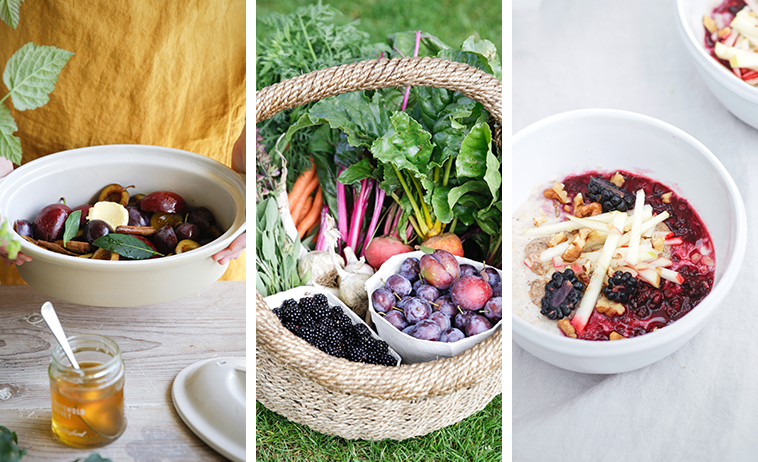

Shrubs are simply equal parts of ripe fruit, vinegar and sugar or honey, muddled together to make a thick syrup which you dilute with still or sparkling water. This creates a refreshing, nourishing drink with the perfect balance of sweetness and tang – and if you choose raw honey and live vinegar you get a boost of beneficial enzymes and gut-friendly probiotics too. They are also a fantastic way to use up ripe fruit, such as plums and blackberries, which are prolific at this time of year.
My go-to recipe is below. Feel free to adjust the flavour to make it as sweet, sharp or fruity as you like (sometimes I go for two parts vinegar to one part fruit and honey).
FRUIT SHRUB RECIPE
- blackberries, plums (stones removed) or a mixture of both
- raw honey or sugar
- apple cider vinegar
Start by weighing out your fruit, then weigh out an equal amount of vinegar and honey. Mix the honey and fruit together and muddle, crushing the fruit as you go. Leave in the fridge overnight. The next day, add the vinegar and stir. Leave for another night in the fridge before straining. To serve, put a spoonful or two of the fruit shrub into a glass, top up with still or sparkling water, stir and enjoy.
Rhaya hosts regular seasonal wellness workshops at our farmshops in London and the Cotswolds. The next is on 13th September at Daylesford Notting Hill, focusing on autumn immunity. Booking is essential.
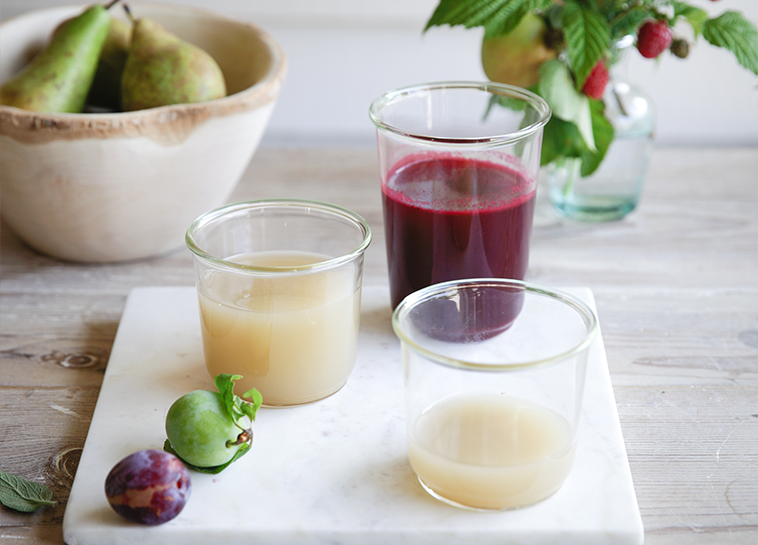

“August carries such a restorative sense of slowness. Summer holiday season takes hold and there’s a feeling of calm and of freedom to the month. Perhaps it’s also the anticipation of knowing that life returns to full speed in September, so we should savour these slower days while we can.
This August brought a flurry of productivity in my garden. The sweet peas and dahlias have burst into bloom, bringing so much colour, and my plates have been full of the courgettes, French beans, plums, greengages, melons, figs and berries we’ve been harvesting from my garden – along with armfuls of tomatoes from the farm’s market garden. Tomatoes are going to be with us for a few weeks more, so we’ve been enjoying them in lots of different ways. I love them served very simply just with some soft ewe’s cheese or on the chillier evenings we’ve turned them into big batches of slow-roasted tomato sauce, then freezing portions to preserve them for the autumn.”




